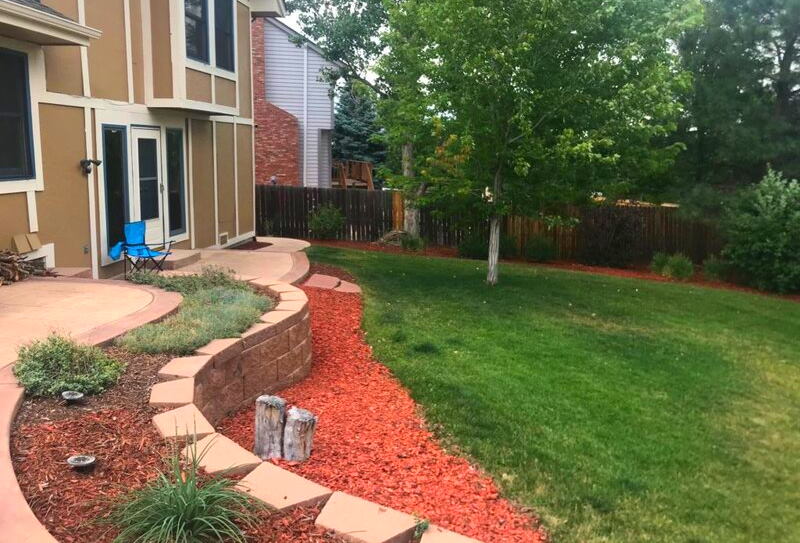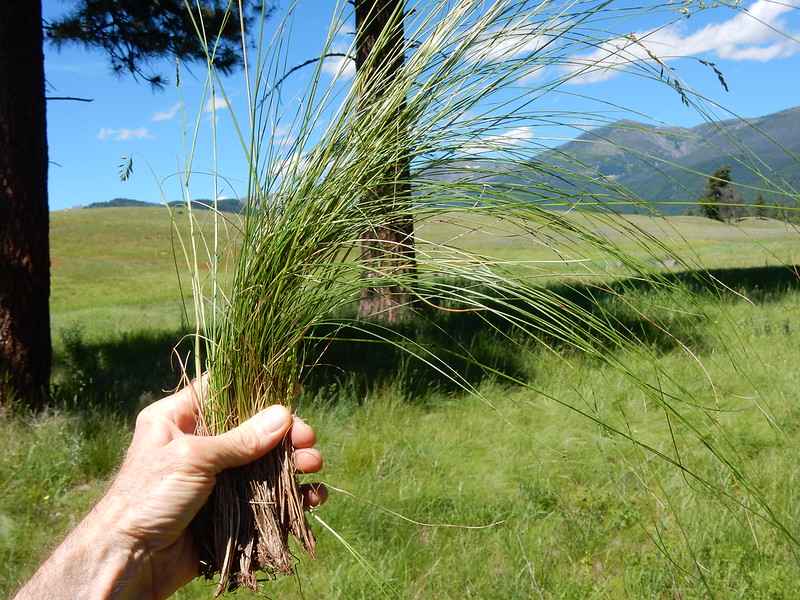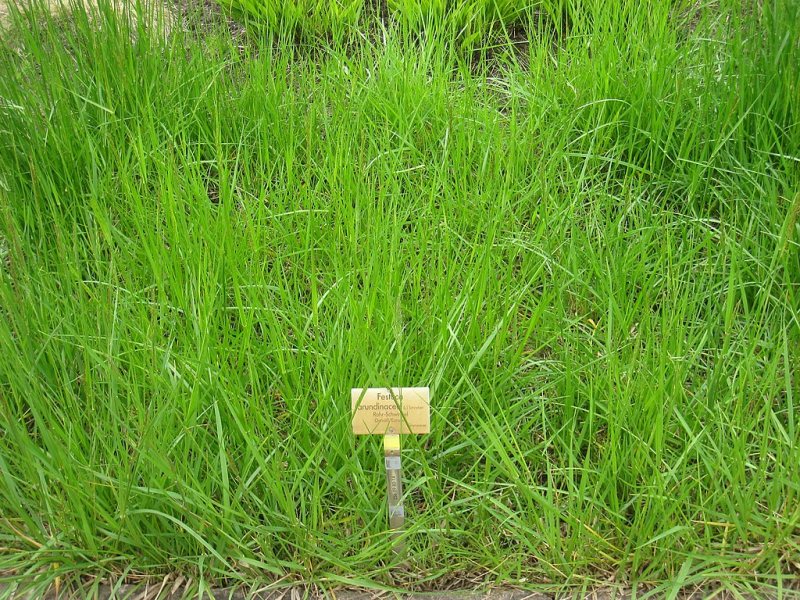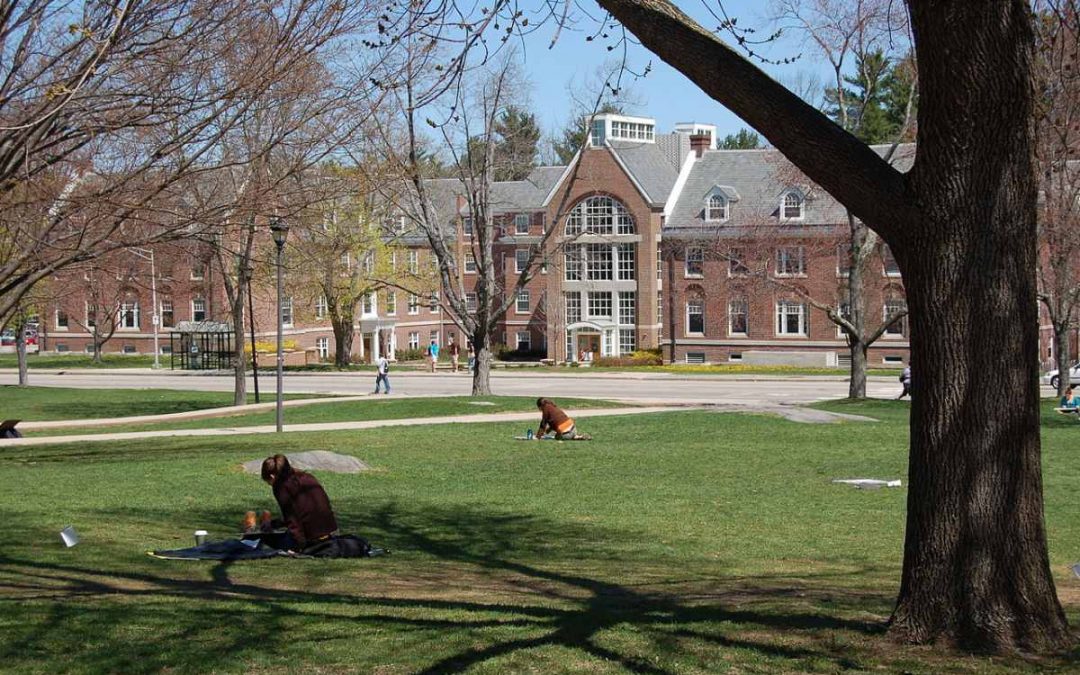New Hampshire is among the snowiest states in the nation. Though the climate can be harsh in winter, it’s not impossible to have a great lawn in New Hampshire if you know the four grass seeds that thrive in this challenging climate.
Good grass is the key to a lush, green, and healthy lawn. Let’s take a look at the grass types that do well here.
In this article:
Best Grass Seeds for New Hampshire
There are primarily two types of grasses:
- Warm-season grasses grow best in late spring and summer when the temperatures are between 75 and 95 degrees Fahrenheit.
- Cool-season grasses grow most actively in early spring and fall when temperatures are around 55 to 75 degrees Fahrenheit.
It probably comes as no surprise that cool-season grasses are best suited to New Hampshire’s harsh winter.
Let’s take a closer look at each grass type:
1. Kentucky Bluegrass

Photo Credit: Brenda Ryan / Wikilawn
Kentucky bluegrass looks beautiful with its fine-textured, dark-green grass blades, which is why it’s so popular across wide swaths of the North and Midwest. It’s also soft on bare feet.
But if you’re considering Kentucky bluegrass, you should know that it holds up under heavy use only moderately well. It withstands kids and pets but maybe not a neighborhood soccer match. On the plus side, it recovers quickly from damage.
Kentucky bluegrass isn’t a good option for people who want low-maintenance lawns as it requires regular mowing and fertilization. It’s also prone to some diseases.
- Classification: Cool-season grass
- Spreads by: Rhizomes
- Shade tolerance: Low
- Drought tolerance: Moderate
- Foot traffic tolerance: Moderate
- Maintenance needs: Moderate mowing frequency; high fertilization.
- Mowing height: 2 to 3 inches
- Potential for disease: Moderate. Prone to several diseases, such as leaf spot, dollar spot, necrotic ring spot, summer patch, and stripe smut.
2. Fine Fescue

Red Fescue – a species of fine fescue
Photo Credit: Matt Lavin / Flickr / CC BY-SA 2.0
Fine fescue is a highly adaptable grass that grows well in full sun and shade. It forms a lush lawn with green, fine-textured grass blades. Fine fescue is a low-maintenance grass that requires minimal watering and moderate mowing.
On the down side, while fine fescue can handle normal outdoor usage, it doesn’t tolerate a great deal of foot traffic, and it takes time to recover from damage.
- Classification: Cool-season grass
- Spreads by: Bunch-type
- Shade tolerance: Moderate
- Drought tolerance: High
- Foot traffic tolerance: Low
- Maintenance needs: Low
- Recommended mowing height: 1.5 to 3 inches
- Potential for disease: Moderate. Prone to red thread, leaf spot, dollar spot, summer patch, and powdery mildew.
3. Turf-Type Tall Fescue

Photo Credit: Daderot / Wikimedia Commons / Public domain
Turf-type tall fescue features dark green, coarse-textured grass blades. This grass doesn’t look great when used alone, but you can combine it with other grasses for a better appearance. Tall fescue grows best in full sun and resists disease pretty well.
Turf-type tall fescue can handle occasional backyard parties, but it can’t quickly recover from damage. If you’re looking for a low-maintenance turf, this is not it: Tall fescue requires frequent mowing and fertilization.
- Classification: Cool-season grass
- Spreads by: Bunch-type
- Shade tolerance: Moderate
- Drought tolerance: Low
- Foot traffic tolerance: Moderate
- Maintenance needs: Frequent mowing and fertilization
- Mowing height: 2 to 4 inches
- Potential for disease: Low
4. Perennial Ryegrass

Photo Credit: Dr Mary Gillham Archive Project / Flickr / CC BY 2.0
Perennial ryegrass germinates in less than a week, making it one of the fastest-growing grasses. It looks beautiful with fine-textured, dark green grass blades. Perennial ryegrass grows best under constant direct sunlight.
Perennial ryegrass can tolerate high foot traffic, but it takes time to recover from damages. This grass is prone to red thread and gray leaf spot. But with proper maintenance, you can minimize the damage or prevent the disease altogether.
- Classification: Cool-season grass
- Spreads by: Bunch-type
- Shade tolerance: Low
- Drought tolerance: Moderate
- Foot traffic tolerance: High
- Maintenance needs: Moderate
- Mowing height: 2 to 3 inches
- Potential for disease: High. Prone to red thread and gray leaf spot.
Best Grasses at a Glance
| Grass | Shade Tolerance | Drought Tolerance | Maintenance Needs | Disease Resistance |
| Kentucky bluegrass | Low | Moderate | Moderate | Moderate |
| Fine fescue | Moderate | High | Low | Moderate |
| Turf-type tall fescue | Moderate | Low | High | Low |
| Perennial ryegrass | Low | Moderate | Moderate | High |
FAQ About New Hampshire Grass Types
Fine fescue and turf-type tall fescue can handle shade.
Fine fescue can survive with minimal watering.
Fine fescue is the best option for a low-maintenance lawn.
The Final Word
All grasses listed here survive well in New Hampshire’s cool climate. So the next thing to consider is which grass best suits your lifestyle. Some require more maintenance than others, some handle drought better, and some stand up to the pounding of backyard barbecues and other get-togethers.
You should also consider the rest of your landscape. If you want to add some color to your yard we recommend you invest in native plants that grow naturally in New Hampshire’s climate and can survive with little to no maintenance.
Proper maintenance is critical for a lawn. If you want to enjoy a beautiful garden without breaking a sweat, Wikilawn New Hamshire lawn pros can help.
Main Photo Credit: Congreve Hall / Kylejtod at en.wikipedia / Wikimedia Commons / CC BY-SA 2.5

